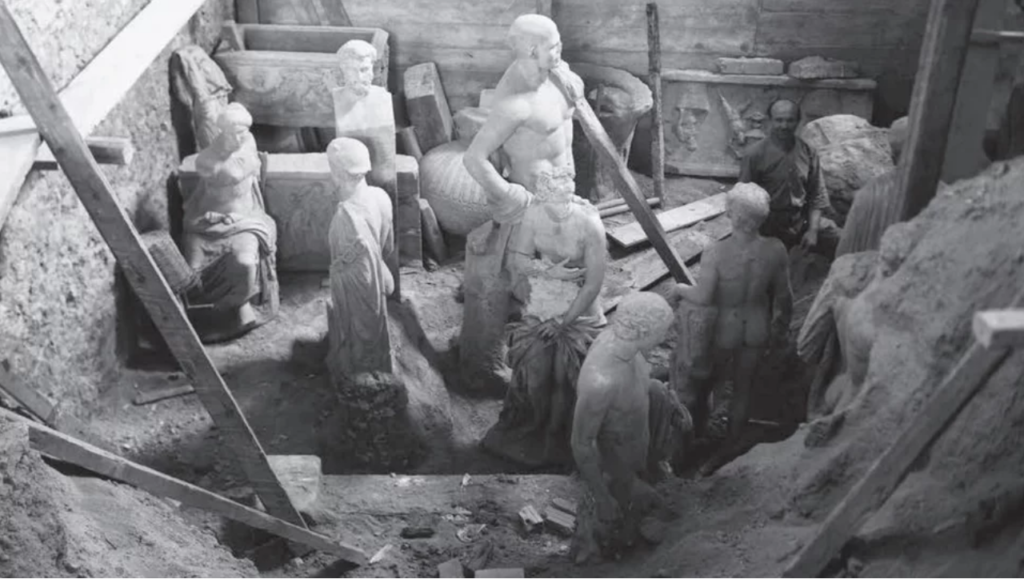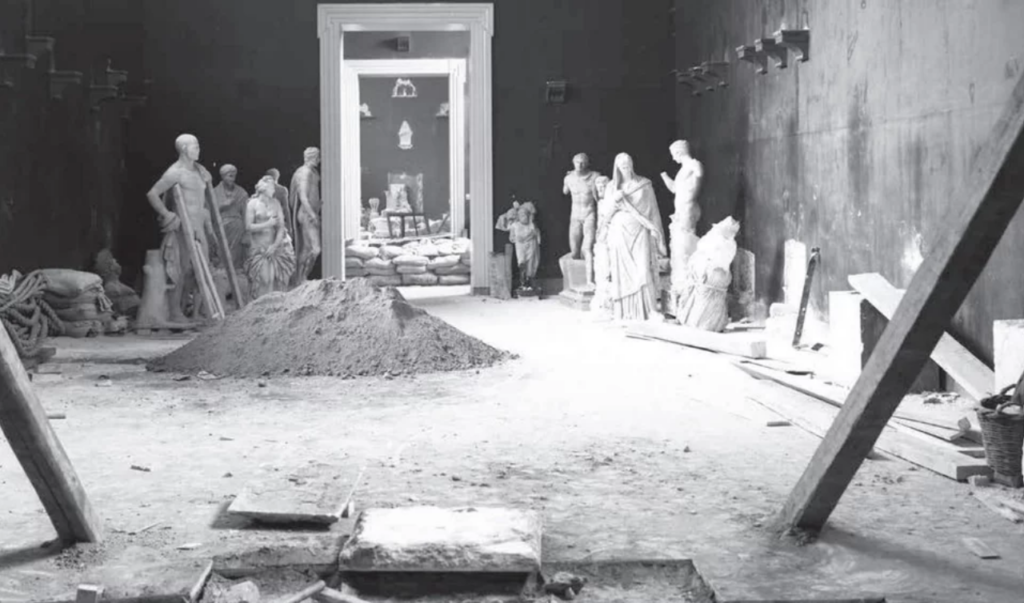
In April 1941, German troops invaded Athens. The next morning, Nazi officers went to the National Archaeological Museum to inspect the antiquities and assess which ones they would steal to transport them to Germany.
However, to their surprise, the museum halls were empty, having none of the great exhibits of the glorious Greek past because archaeologists and museum staff had hidden the archaeological treasures.
Even though the Nazi officers insisted to ask where they had hidden the statues and all other exhibits, no one revealed the secret, no matter how hard they posed threats.
Where were the antiquities hidden from the Nazis?

The large ancient statues were buried under the halls of the museum, and so they remained until the end of the war. Other sculptures, bronze and clay works had been boxed and transported to shelters in Athens. Gold had been hidden in the basements of the Bank of Greece.
Hiding Greece’s antiquities from the Nazis
With the beginning of the war on October 28, 1940, the Directorate of Archaeology of the Ministry of Education, issued general technical instructions for the protection of the museums from aerial dangers. A massive effort then began across the country by various committees to hide and secure museum exhibits.
Testimonies and personal experiences of Semni Karouzou, a Greek classical archaeologist who specialized in the study of pottery in ancient Greece, were announced in March 1967 and published in 1984.
Referring to the National Archaeological Museum, Semni Karouzou said:
“It took six whole months to guard our antiquities which were threatened by the sound of war. Those who had undertaken the protection of the archaeological treasures gathered in the museum very early in the morning.”
“While our soldiers were fighting head to head, sculptor Andreas Panagiotakis, gave the order to set fire, as the craftsmen pulled marble statues with chains and ropes to place them in large pits that had opened in the north wing of the museum,” she added.

After the end of the war
The first concern for the Greeks, after the liberation, was to unearth the antiquities and see what the condition of the sculptures was after being buried under the thick layer of sand.
Greek poet, Giorgos Seferis described moments from the revelation of the ancient statues. An excerpt of the text said:
The statues, still submerged in the earth, looking naked from the waist up, were planted at random. It was a dance of resurrection, a second coming of bodies that gave you an unexplainable joy.”
See all the latest news from Greece and the world at Greekreporter.com. Contact our newsroom to report an update or send your story, photos and videos. Follow GR on Google News and subscribe here to our daily email!



